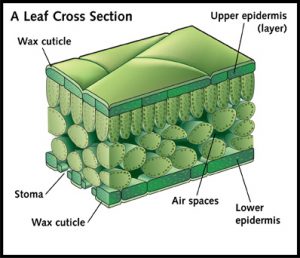As humans, we have different ways to prepare ourselves from changing weather conditions such as bringing out our winter coats in the cold, umbrellas when it rains, and sunglasses when it’s sunny. Plants have a similar feature that can do all of this, plus more! The outermost layer of plants is called the cuticular wax, has the ability to protect against many different environmental and physical factors including: water loss, disease, ultra-violet (UV) light, and air pollution.

Source: The British Gardener
Knowing what we do about the various functions of cuticular wax, one may wonder how cuticular wax responds to climate change. An ecologist from Southwest University, Yanjun Guo, had a similar question in mind. He conducted research on alpine meadow plants at the Qinghai-Tibetan Plateau in Northwest China in hopes of finding a correlation between cuticular waxes and climate change.

Yanjun Guo and his research team. Source: Yanjun Guo
Alpine plants are found at very high latitudes and are mostly isolated from human activity. Therefore they are influenced by climate factors exclusively, which makes them extremely sensitive to climate change.

Alpine meadow in the North Cascades, Washington, United States. Source: Wikipedia
We had the opportunity to meet with Guo to further discuss his research. In the video below, he explains his study on cuticular waxes in alpine meadow plants and his prediction for the relationship between plant waxes and climate change.

In the podcast below, we explained Guo’s major findings on cuticular waxes of alpine meadow plants.

In summary, alpine meadow plants respond to climate change as a community but not necessarily on an individual plant species level. Cuticular wax composition is an important adaptation that is essential for plants to defend themselves against the effects of climate change.
Acknowledgements: We would like to thank Yanjun Guo for his time and assistance in this project, we admire your passion in science research. We also wish to thank the University of British Columbia and Dr. Ed Kroc from the Science 300 teaching team for his guidance and support throughout the project.
SO Group 4: Samantha Chan, Rashmeen Kambo, Ashley Shepherd, George Gu
